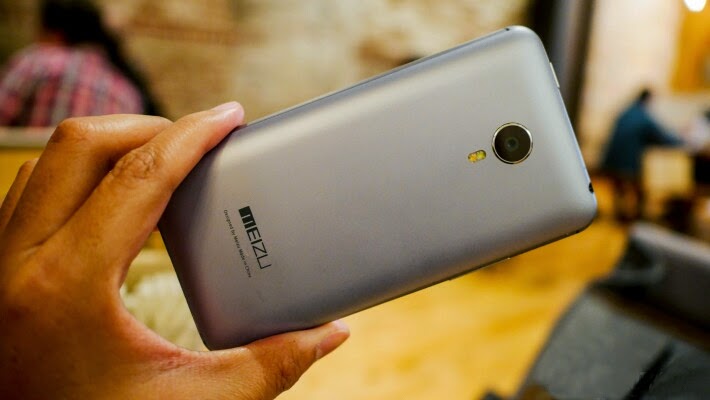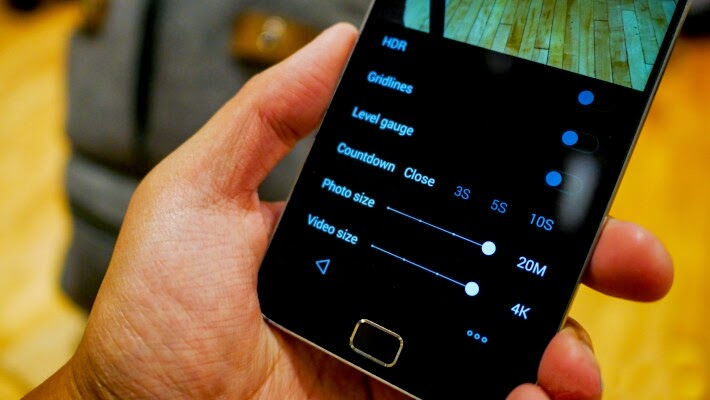Note:
Hands-on Yotaphone 2
The YotaPhone 2 isn’t just a flagship with a 5″ 1080p AMOLED screen and running on a Snapdragon 800 chip. It is more than just a phone, thanks to its rear 4.7″ electronic paper display, which can be used as an e-book reader, as well as a primary display to operate the basic phone functions.
Meizu MX4 Pro Review
THE BOTTOM LINE
Though not flashy, the Meizu MX4 Pro has got what counts
- Quad HD display
- Good performance with Exynos 5 Octa
- Great and reliable fingerprint reader
- Surprisingly good sound and speaker quality
- Camera provides a number of good modes, and above average quality
- Design doesn't really stand out
- No expandable storage
- Battery not replaceable, and life uneven
- Lot of trouble connecting to LTE networks
- Camera is not the fastest shooter
DESIGN
DISPLAY
PERFORMANCE
HARDWARE

CAMERA
Picture quality was actually quite good for the MX4 Pro, as details were very well captured and colors looked appealing when you could capture them correctly. I did find the exposure and the white balance in Auto mode to be a bit jumpy, needing you to be sure that what you want to capture is what you see in the viewfinder. Even in low light situations, the camera manages nice results, with HDR and Night Modes available to enhance the shot.
The only real gripe with this camera was the somewhat slow auto focusing time. The camera of the Meizu MX4 Pro may not be the absolute best comparatively, but it is far from the worst as well.
SOFTWARE
PRICING AND FINAL THOUGHTS
Meizu’s current line of flagship devices is slowly making its way out of China and into other markets, though we don’t know if it will make it to the US anytime soon. When converting the price from Asia, the phone comes in at around $400, so we wouldn’t be surprised if the Western retail price would be closer to about $500 unlocked. It’s not a bad price point, but plenty of other phones in the Asian market have compelling experiences to offer and can rock similar or even lower price tags. It is also a good idea to wait because of the network connectivity problems stated above, but if you do want to get your hands on it, it is available from Amazon for $610.
So, there you have it – the Meizu MX4 Pro! The MX4 Pro serves as a great example of the growth we’re seeing out of China. Just a few weeks back at CES 2015, we got to see a few high-quality but affordable devices from Chinese companies, and that is a trend that looks to be on the rise.
Meizu is in the thick of this trend with a phablet offering that manages to be powerful but accessible at the same time. Its design choices aside, the shell is just a casing for all of the power that is found underneath. A QuadHD display, good performance, an enjoyable sound stage, and an above average camera all make the MX4 Pro a package we do hope to see more easily available in the US soon, which should also resolve the network connectivity issues I faced during my testing. It might not stand out very much, but dig a little deeper and you’ll find a pretty fun and powerful phone in the Meizu MX4 Pro.
SPECIFICATIONS
| Display | 5.5-inch IPS LCD 2560 x 1536 resolution, 546 ppi |
| Processor | 2 GHz Exynos 5 Octa Mali-T628 GPU |
| RAM | 3 GB |
| Storage | 16/32/64 GB, no microSD expansion |
| Camera | 20.7 MP rear camera with dual LED flash 5 MP front-facing camera |
| Connectivity | HSPA, LTE Cat4 150/50 Mbps Wi-Fi 802.11 a/b/g/n/ac, dual-band, Wi-Fi Direct Bluetooth 4.0, GPRS |
| Sensors | Accelerometer, gyro, proximity, compass |
| Battery | 3,350 mAh |
| Software | Flyme OS 4.1 based on Android 4.4.4 Kitkat |
| Dimensions | 150.1 x 77 x 9 mm 158 grams |
Micromax Yureka Review
 For those reading this section , mind yourself that you are reading about an under 150$ (9000 INR) rupees phone, Micromax Yureka, running Cyanogen OS 11. It is also one of the cheapest dual-SIM 4G Android smartphones available in India right now and at the same time boasting some impressive specifications. With a low price tag, good specifications, and Cyanogen taken care of the software part, the whole thing seems too good.The YU line is a lineup of smartphones with which Micromax intends to fire up the competetion with chinese manufacturers like, Xiaomi, ONE PLUS, Lenovo, Asus and more. Let's find out how does the Yureka fare in all the prospects.
For those reading this section , mind yourself that you are reading about an under 150$ (9000 INR) rupees phone, Micromax Yureka, running Cyanogen OS 11. It is also one of the cheapest dual-SIM 4G Android smartphones available in India right now and at the same time boasting some impressive specifications. With a low price tag, good specifications, and Cyanogen taken care of the software part, the whole thing seems too good.The YU line is a lineup of smartphones with which Micromax intends to fire up the competetion with chinese manufacturers like, Xiaomi, ONE PLUS, Lenovo, Asus and more. Let's find out how does the Yureka fare in all the prospects.
Wikipedia
Last Updated
Popular Posts
-
Out of the blue the new Raspberry Pi 2 is official. It’s a successor to the B+ model and features the same hardware arrangement (1x Ethernet...
-
Alto’s Adventure is procedurally generated endless snowboarding game. You play as Alto and his friends, going down snow covered slopes on ...
-
REVIEW You should be already familiar with India's second largest smartphone manufacturer Micromax mobiles, recently anoounced an...
-
Tech21 Evo Mesh case is part of the company’s extensive iPhone 6 lineup. The protective cover is made for users who like to keep their smar...
-
With Windows 10 coming down Skype will be becoming into to a part of the OS itself, both on phones and on the desktop. The new app can now...
-
With the Lollipop craze in full steam and the Galaxy Note 3 already up for a soak test in Russia it is only natural to expect that Sam...
-
Google’s previous Android ad employed cute animals, but the latest installment in the company’s “Be Together. Not The Same” campaign for i...
-
The Mobile World Congress is one of the biggest events in the mobile industry and it's about to start this very Sunday. As usual, th...
-
Alleged wallpaper from the upcoming HTC One M9 made the rounds on Twitter. The image seems to confirm that the Taiwanese manufacturer’s ...
-
THE BOTTOM LINE Though not flashy, the Meizu MX4 Pro has got what counts PROS Quad HD display Good performance with Exynos 5 Oc...
Recommended
OnePlus One will be available every Tuesday without an invite
the company additionally revealed in a blog post that the promotion stretches far wider than that. The open sale will take place every Tuesday from now on and..

How Cortana on Windows 10 came to be a part of it
Cortana gets to know you and helps you get things done, all while letting you interact naturally and easily. By learning more about you over time, Cortana becomes increasingly useful every day.

64GB version of Xiaomi Mi 4 flash sale in India
If you are from India and like the Mi 4 but were hoping for some more built-in space, then you'll have to wait until February..

Micromax Yu Yureka Review
See what this incredible budget offering from micromax can do against the challenge in the full review

‘Game of Thrones – Episode 2' game review
‘Game of Thrones – A Telltale Games Series – Episode 2′ for iOS and Android game review

Microsoft Office 2016 preview is now available
Microsoft Office 2016 preview is now available for users who are willing to commit to a non-disclosure agreement

MWin 10 Tech Preview for phones tipped to release early next week
a couple of days ago, some screenshots of Windows 10 Technical Preview for Phones were spotted in the wild, and now it looks like the first preview build will be available to Windows..

Motorola Moto E gets a price cut in India
Motorola’s entry-level Android smartphone Moto E has received a price cut in India. Originally costing at INR 6,999 ($112), the entry-level Android device is now available..









































.jpg)
















.jpg)





